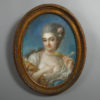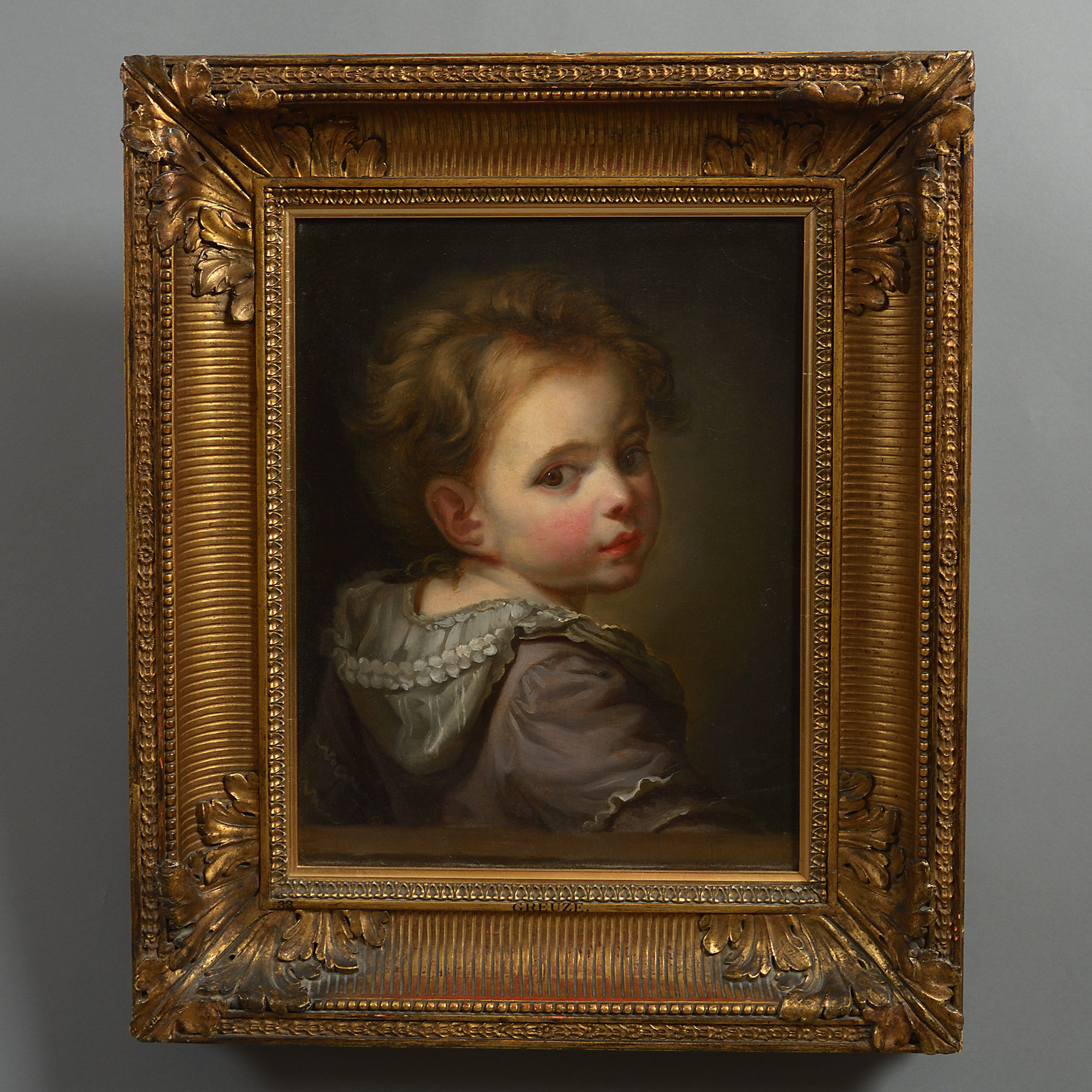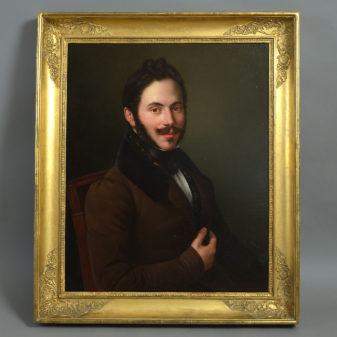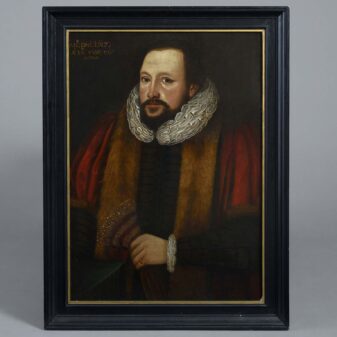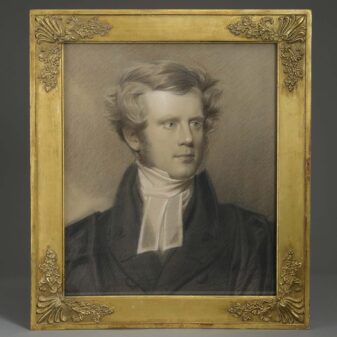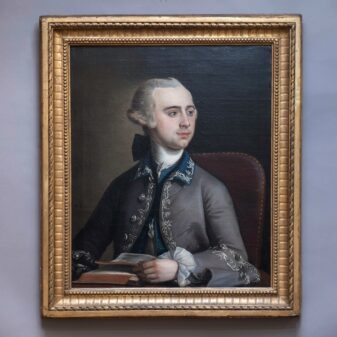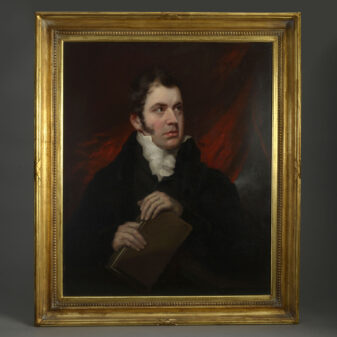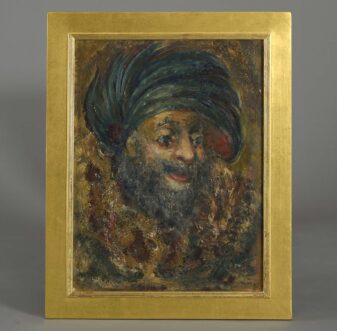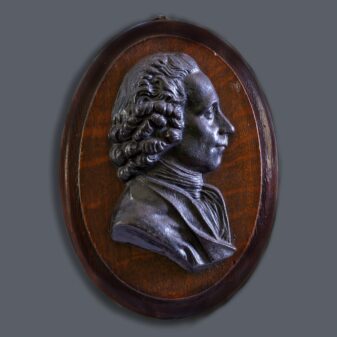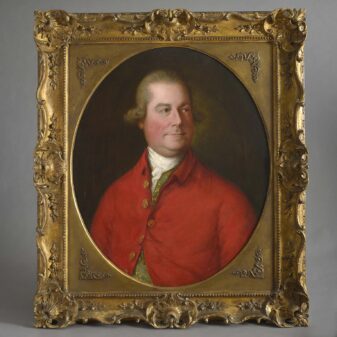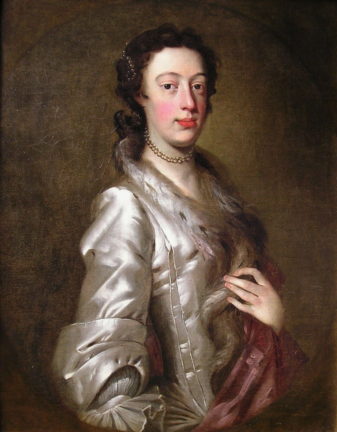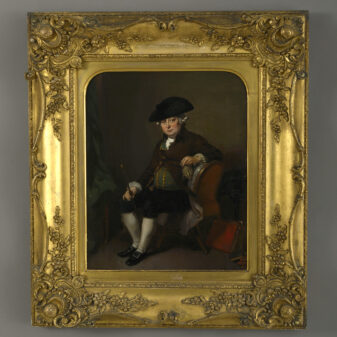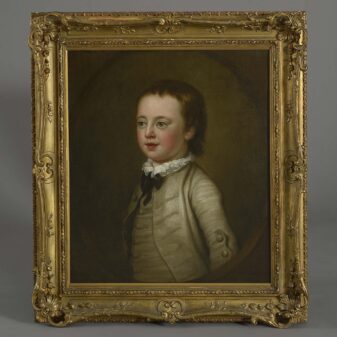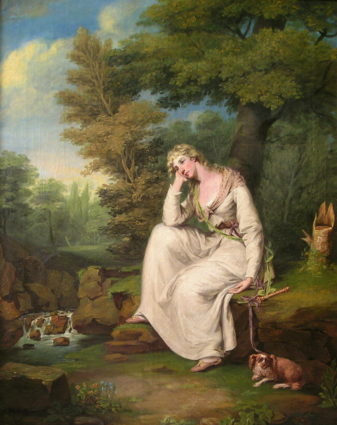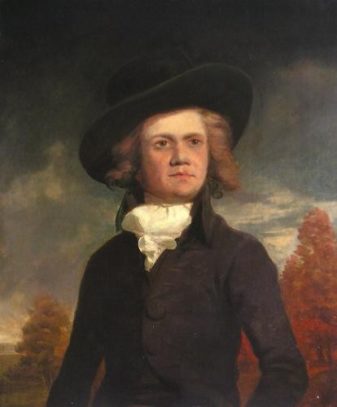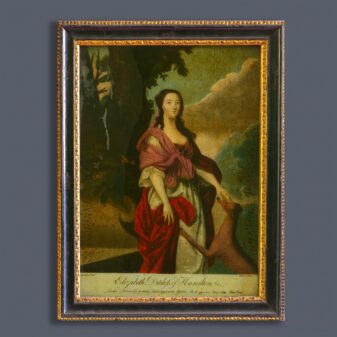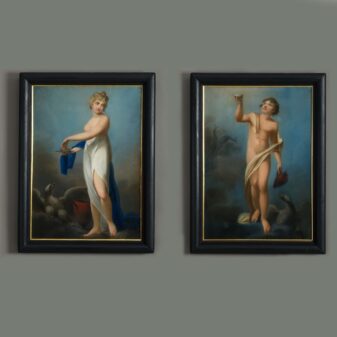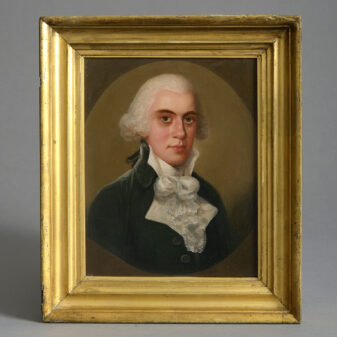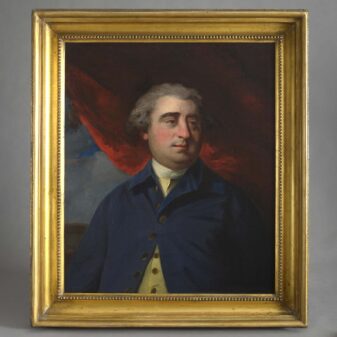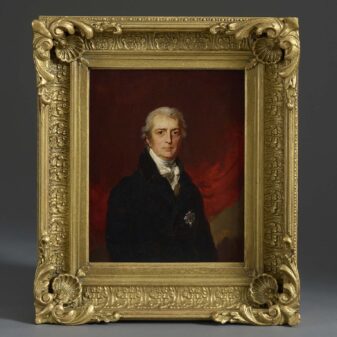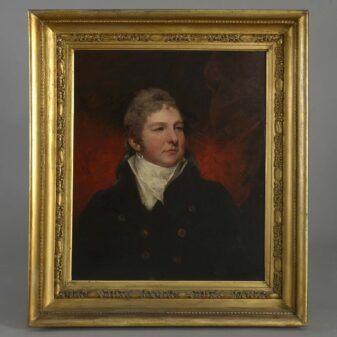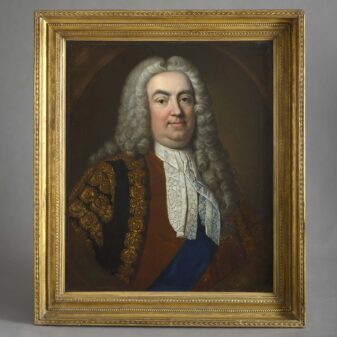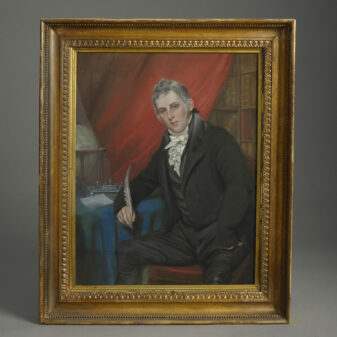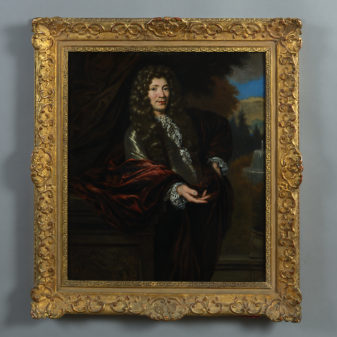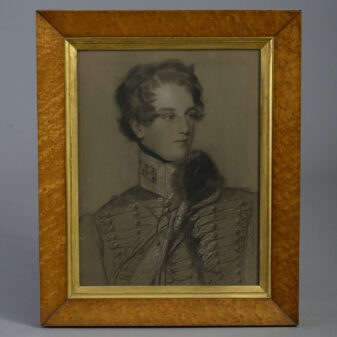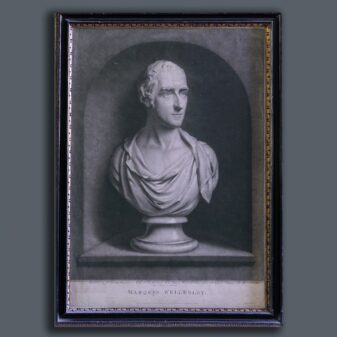La Petite Nanette, 18th Century Portrait of a Child After Jean-Baptiste Greuze
£4,900
SOLD
Held in a 19th century Empire frame – see dimensions above.
Oil on canvas: 16 x 12 ½ inches (41 x 32 cm)
Provenance: Blairquhan Castle, Scotland; Christie’s, London 24 May 2007, lot 144; Private collection, United Kingdom
Sir William Farrer most probably purchased this painting in the 1880s. Farrer was a notable art collector whose pictures passed through his family by descent to the Hunter Blairs of Blairquhan. It formed part of the their collection at Blairquhan Castle until it was sold in 2007.
Jean Baptiste Greuze was a French painter who, after initial success at the Salon of 1755, rose to prominence. Retaining clear, bright colours and the lighter attitude of 18th century painting, Greuze incorporated a Dutch-influenced realism into his French genre painting and portraiture. Greuze’s moralizing paintings exemplified the new idea that painting should relate to life, through vivid facial expressions and dramatic gestures. His works captured the details of settings and costumes, “spoke to the heart,” educated viewers, with the aim of makeing them “virtuous.” Diderot praised his work as ‘morality in paint’. Yet such commentary was not sufficient in the long term – The Académie Royale only accepted him to join their ranks as a genre painter. As such Greuze realised he would never be lionised by the artistic establishment. As taste began to swing towards Neoclassicism, his approach to painting gradually went out of fashion and the Revolution in 1789 meant that he sank into obscurity. However, today his work is once again celebrated and makes remarkable prices.
The portrait is a version of Greuze’s painting which hangs in the Musée Fabre at Montpelier, France. The subject is typical of the artist’s work, focusing on the sentimental nature of innocence. This composition closely follows the original, but not exclusively, intriguingly placing the girl behind a stone ledge. This was a device used in some 17th century portraits including many by Sir Peter Lely and by Flemish artists of the period, but it was not incorporated in the original by Grueze. The artist who undertook this example most probably sought to bring an aspect of enhanced realism to the composition. This makes it distinct and unusual in comparison with the other seven listed copies which have found their way to the art market over the last hundred years, all of which are poorer in quality than the example presented here. It is entirely possible that this is a work from Greuze’s studio or even his daughter Anne-Geneviève who copied pictures by her father. As a family member, she would most probably have had the confidence to alter the composition. But her body of work however is small and confused and as such a firm attribution in this instance is not possible.


